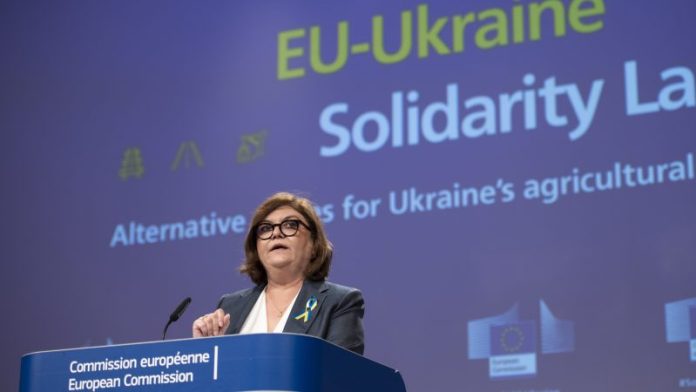Solidarity Lanes, launched by the European Commission, is celebrating its two-year anniversary, according to EU Neighbours East.
So far, the Solidarity Lanes helped Ukraine export more than 136 million tonnes of goods, such as grain, ore, and steel. Meanwhile, Ukraine imported more over 52 million tonnes of essential goods, including fuel, vehicles, and fertilisers.
The Solidarity Lanes also allowed military and humanitarian aid to reach Ukraine. The corridor passes through the Danube region, Poland, the Baltic States, and the Adriatic region by rail, road, and inland waterways. It complements Ukraine’s Black Sea corridor established in autumn 2023.
However, the Danube and Polish-Baltic corridor remain key for all imports, while the Adriatic is particularly relevant for Ukraine’s non-agricultural exports.
Adina Vălean, European Commissioner for Transport, stated that the Solidarity Lanes helped prevent a global food crisis. The corridor would “remain a secure option for Ukraine and Moldova’s trade with the rest of the world,” she added.
Two years ago, Solidarity Lanes reshaped the logistic routes across Eastern Europe to keep Ukraine and Moldova’s economies functioning and to prevent a global food crisis. The EU invested in transport infrastructure in Poland, Slovakia, Hungary, Romania, Ukraine, and Moldova, anchoring the latter two into the EU Single Market and Transport Area.
For two years, the European Commission also played a key role in coordinating the authorities and the transport community in the EU, Ukraine, and Moldova. Large-scale EU projects include, for instance, Primus, a project to improve navigation on the Danube and the Sulina Canal towards the Black Sea.
The Connecting Europe Facility (CEF) helped finance critical border needs. The Facility also took the first steps to integrate the transport systems of Ukraine and Moldova into the European Union’s TEN-T network. Moreover, significant progress was made in the transition to a European standard gauge, which contributed to the creation of an interoperable EU railway system.
